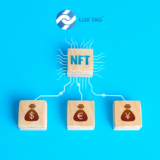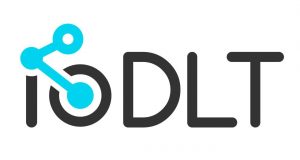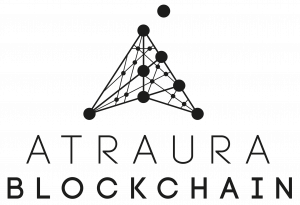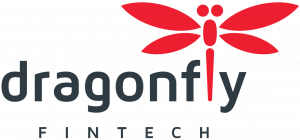COMSA’S new policy to support the issuance of tokens that are not categorized as Crypto assets

First appeared on Comsa.io
COMSA’S new policy to support the issuance of tokens that are not categorized as Crypto assets, by utilizing the five elements of Core, Hub, NEM, Symbol and Mijin.
Tech Bureau and Tech Bureau Holdings will continue COMSA to support the issuance of tokens on blockchain, but will also focus on SYMBOL (the name of the next generation NEM), which is based on NEM and its evolutionary Catapult engine, and our private blockchain product mijin, which is based on a common engine. COMSA will also consider changing the course of its business with a view to utilize enterprize tokens that are not categorized as crypto assets or electronic record transfer rights.
First of all
It has been more than two years since ICO related regulatory direction forced the suspension of various ICO deals of COMSA. Since then, communication and publication from our company has been limited and, we fully understand that token holders are feeling uncomfortable about the situation. This is the most formidable obstacle for our company as we try to move our business forward.
Due to the lack of clear guidelines, we were unable to implement most of the token features we originally envisioned. We are frustrated by this fact, however, we deeply appreciate token holders who presently believe in the COMSA vision.
Legal amendment in May 2020 and risks
The amendments to the Japan Payment Services Act effective as of 1 May 2020 changed the term “virtual currency” to “crypto asset”. In addition, the revised Financial Instruments and Exchange Act, which came into effect on the same day, created a new “electronic record transfer right” and clarified the scope of security tokens.
We had hoped that the law would finally enable some communications between token holders and the implementation of the token function with the amendment. Unfortunately it only provided basic directions for the implementation of ICOs, and as a result, it highlighted the risks of ICOs and the following business operations.This is because, like the stock market, the policy of market manipulation and the dissemination of rumors will be clearly regulated for crypto assets.
Although the amendment of the law itself is a positive one that will lead to the development of crypto assets, administrative penalties such as fines for market manipulation and dissemination of rumors have not yet been established. If people fall under such penalties, there is a risk of being directly criminally punished, which is the most serious type of sanction under the Financial Instruments and Exchange Law.
This is a risk not only to Tech Bureau as a token issuer, but also to the COMSA token holder. Therefore, avoiding that risk ourselves in the first place will likewise reduce the future risk and improve the profits of token holders.
At present, there are no detailed guidelines for disclosure in ICOs or STOs industry associations. In order to protect the interests of our company and token holders, existing token issuers are unable to accurately assess the extent and risk involved in disseminating information on blogs, social media, and chat, so we have been forced to limit the scope of our external activities to a limited and clerical disclosure and announcement.
The same is true for communications between token holders and us as the token issuer. In the situation where the guidelines do not yet specify the responsibility for disclosure and oversight of the community, continuing to operate the official COMSA chat rooms on the Telegram poses a significant risk not only to our business, but also to all parties, including volunteer moderators, chat participants, and token holders.
Currently, Tech Bureau Holdings develops a solution outside of Japan and another entity Tech Bureau develops a solution in Japan, and both companies have to carefully consider all associated risks
COMSA’s official chat room is suspended.
Avoiding risks imposed by the amendment, we have decided to suspend users’ writing privileges in the official COMSA chat rooms. Existing moderation rules will continue until write privileges will be removed by 17:00 JST May 31, 2020.
After this deadline, volunteer moderators privileges will be removed, we will continue to have administrative privileges, and the chat room itself will remain intact on Telegram.
Once new ICO disclosure and community management standards are established in the industry’s guidelines, we will review them and determine if we can follow, and then consider reopening the official chat room.
We will continue to respond to your inquiries through the contact form on the official website COMSA.io.
Revision to new business policies in line with legal revisions
Given the huge risks that are not fully visible, as described above, it would be very reluctant to continue operating while seeking new regulations and restrictions in the future.
In order to break away from this swamp and move forward with COMSA’s business, we have concluded that the best direction to go is to take advantage of the outside of the framework that has been clarified by the recent amendments to the law.
Therefore, we are considering revising our business policy to support the token business by using public blockchain, COMSA CORE, HUB, and mijin synthesized outside the framework of crypto assets, while maximizing the existing resources and experience.
Previously Proposed COMSA Token Features
We have been exploring all possible uses for COMSA tokens since the sudden restriction of ICOs where COMSA had been doing well. However, after two and a half years and after the revision of the law, there are still no appropriate guidelines for ICOs, so it is still difficult to say clearly that the incentives for token holders proposed in the white paper are feasible.
We are also considering STOs that issue security tokens as electronic record transfer rights and ICOs that issue utility tokens as other crypto assets as part of our long-term strategy. However, given the required securities and exchange qualifications and the time to wait for future guidelines to be enacted, this is a disincentive to move quickly as a business in the immediate future.
In addition to the above-mentioned guidelines, accounting standards for ICOs have not yet been established, and the barriers to the implementation of STOs and ICOs are still high even for general companies, so it must be said that it is difficult to see the future in terms of business processes.
As for our long-term strategies for STOs and ICOs, now that we have transferred our affiliated crypto asset exchange to other companies, we need to promote business alliances with partner exchanges and partner brokerage firms with IEO in mind.
The same can be said for the overseas ICO solutions developed by TechBureau Holdings. In recent years, international businesses have been required international STO standards, but the regulations still vary by region and jurisdiction, making it difficult to provide a consistent solution.
Therefore, once we eliminate all features that could be considered security tokens, burn for tokens that are still open to interpretation, and payment methods for the purchase of ICO tokens that are not feasible to implement at this time, there is no choice but to new features.
In the midst of such a stagnant situation, we have been able to find the light in our solutions business, which maximizes our years of experience and offers token issuance and utilization in a way that is neither STOs nor ICOs.
Among them, a business model using NFT(non-fungible tokens) or tokens restricted transactions by an unspecified number of people by using transfer restriction functions, that cannot be listed on a crypto asset exchange, is highly feasible.
Proposed new token business and COMSA token features
What we have now started to consider and propose as a concrete idea is the distribution of coupon type tokens that can only be returned to the issuer using air drops.This approach allows you to automatically distribute a variety of benefits to existing COMSA token holders and to token holders of COMSA customers based on the number of tokens they hold.
In addition, if we are able to partner with a crypto asset exchange that has listed or is seeking to list these COMSA-related tokens in the near future, it will be possible to use the COMSA-related token itself, along with the coupon token, as a means of payment for goods and services that are eligible for coupons.
NEM’s Mosaic feature, which we have years of experience with, allows us to issue non-transferable, returnable-only-to-issuer tokens in protocol level, with minimal effort.
In addition, Symbol, which evolved from the NEM to the one with catapult core system, not only allows transfer restrictions to be set at the protocol level, but also allows coupon issuers or us to pay XYM transaction fee instead of users for a regular coupon transfer, creating an innovative blockchain couponing service with no network costs to the user.
In addition, because Symbol enables atomic swaps at the protocol level, the complicated transactions involving a coupon issuer, a solution provider like us, and a coupon user can be completed as a single transaction with an atomicity that does not break down in consistency, thus creating an extremely complete transaction system.
In a situation where it remains unclear whether the incentives for token holders originally proposed in the white paper could be implemented in a regulatory-compliant manner, a business proposition that leverages tokens that are not crypto-assets or electronic record transfer rights seems to be the best approach currently available that could enhance the liquidity and functionality of COMSA-related tokens,i.e., the interests of the token holders connected to them.
Additionally we will expand the already offered COMSA Core software, which enables to exchange tokens between the NEM, Ethereum and SYMBOL blockchain, while maintaining balance consistency.
In particular, there are a certain number of companies that want to adopt fungible and non fungible tokens, such as ERC20 and ERC721 on Ethereum as a standard. These tokens can be accommodated by expanding COMSA CORE in the same way.
Furthermore, with COMSA HUB, token-issuing companies can manage the tokens on internal accounts that serve as coupons on mijin’s private blockchain, without directly touching the public blockchain. If any of our potential customers adopt SYMBOL for their token platform, we and our partner exchanges will be able to build services using the latest blockchain technology without having to account for any crypto assets as a token issuer, complete with existing accounting standards.
We are currently considering the feasibility of conducting a test token distribution demonstration on both NEM and Ethereum networks, assuming an airdrop to existing COMSA token holders, starting from the technically realistic standpoint.
Three blockchains connected by two COMSA products
In conclusion, COMSA’s new business policy proposes and considers services based on the following three blockchain axes
- NEM is a public chain that has already proven to be versatile and robust.
- SYMBOL has been newly incorporated with advanced features such as atomic swap.
- mijin is a private chain that has already accumulated several years of actual use.
mijin, which we have been developing for a long time, is not a demonstration platform, but one of the world’s leading private blockchain products that are already being used in a variety of situations such as shareholder electronic voting rights, barcode readers (IoT), meat traceability, point accounting, and attendance management.
The COMSA CORE and HUB, which we developed, connect the above three chains to ensure token integrity, and the simultaneous use of the three chains leads to a certain level of risk diversification.
i.e., in the event of an emergency, one of the chains can be evacuated, or the main chain can be used as the main account to ensure integrity.
If it is an ordinary crypto asset, such a method will lead to confusion in the amount of assets held by the holder, but if it is a token that are not categorized as crypto asset, it is advantageous to use it in a practical way.
With our current product, COMSA CORE already enables cross-chain trading of tokens in three public chains – Bitcoin, Ethereum and NEM – and COMSA HUB provides a mechanism to migrate those accounts to the private chain, mijin.
In the next phase, we will consider a token management environment that integrates NEM, SYMBOL, and mijin with COMSA CORE and HUB, and as a result, we aim to build a mechanism that will be returned to COMSA token holders.
Towards an Era of Efficiency After Corona
It is about to be 7th year since Tech Bureau was founded, and we have had a lot of hard work to build up our track record, including the aforementioned mijin example. However, when an efficiency really matters like now, even traditional industries, markets, and companies that have clung to legacy conventions will be forced to become more efficient in their operations, system construction, and service operations than ever before.
In such a situation, our company will continue to provide services with the same policy for the bright future of After Corona, based on the blockchain technology that has already been proven to be practical and efficient and the experience of its use.
In the future, we would like to comply with the rules and guidelines that are likely to be newly established in Japan, and develop our services while returning the axis to the COMSA business that we were originally aiming for.
We will make every effort to ensure that this new business policy will result in a brighter future for token holders as well as the future of the crypto asset and blockchain industry, so please continue to support us.
Takao Asayama
Previous articles about COMSA and TechBureau related content:
Commencement of development project for RakuE online medical solutions using mijin Catapult v.2
Tech Bureau Holdings Announces Gifu University Begin Collaborative Research









